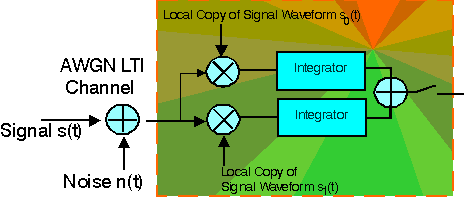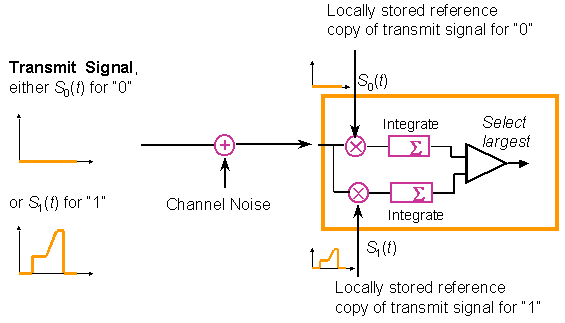
 |
JPL's Wireless Communication Reference WebsiteChapter: Analog and Digital Transmission. Section: Noise. |

| Figure: possible implementation of a matched filter receiver. The signal is multiplied by a locally stored reference copy and integrated over time (correlation). |
The matched filter correlates the incoming signal with a locally stored reference copy of the transmit waveform. The matched filter maximizes the signal-to-noise ratio for a known signal. It can be shown to be the optimal detector if
 |
||
| 3 minute video clip from cource on radio communication, covering the matched filter princle (mov) |
non- | If the noise is non-white, the matched filter can still be applied. In this case, one can pre-filter the incoming signal, to make the noise component white. This is called a whitening filter. Evidently, this also filters the wanted signal. Therefore, the filtered incoming signal is not "matched to" (i.e., correlated with) the reference transmit signal, but with a reference signal that is fed through the a filter that is identical to the whitening filter. Thus, two copies of the whitening filter are needed. It can be shown that one can build a detector that mathematically is equivalent, but only uses one filter. |
dispersive |
If the channel is dispersive, the matched filter concept can still be used,
but one must multiply the incoming signal with a locally generated copy of the expected waveform after transmission over the channel. That is, the receiver must estimate the channel impulse response and apply this to the reference signal waveform.
The incoming signal is correlated with a reference waveform, which is dispersed in the same manner as the channel disperses the radio signal.
|
In the special case that the received signal is a direct sequence CDMA signal, this leads to the concept of a rake receiver.